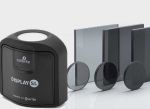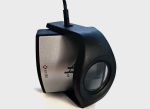As this subject has generate some real interest, especially from manufacturers that cannot perform the same workflow, it makes sense to dedicate a thread to it.
No matter what any hyped-up marketing says, no probe using the same sensor can maintain low-light performance at the same time as extending peak brightness.
The probe's sensor defines the available range.
Changing anything associated with the probe firmware/software, without changing actual hardware, simply shifts the available range - it cannot extend it.
When using i1D3 probes, the best for low-light sensitivity are the models with the lower peak brightness capabilities.
As they all use the same sensor, that should be obvious to anyone.
Extending the peak range always causes the low-light sensitivity to be reduced - all sensors have a finite dynamic range.
However, the unique capabilities of ColourSpace can be used to extend the measurable Dynamic Range of the more black-sensitive low-peak brightness probes to over 5000 nits, while maintaining the probe's inherent low-light sensitivity and colour accuracy throughout the full brightness range, with just the addition of a cheap ND filter.
The use of ND filters is a very common and well understood approach to use with any probes, and virtually all manufacturers use and recommend them.
The main issue is the manufacturer has to match the probe to the filter at the factory.
But, with ColourSpace the potential benefit is extended due to the unique probe matching capabilities, such as Multi-Point Volumetric Matching (MPVM), which no other calibration system can do, combined with the split-profiling capability, which is again totally unique to ColourSpace.
Such unique capabilities enable ColourSpace to match any ND filter to any probe with far greater accuracy than possible even by probe manufacturers.
See the
Extended Probe Range info in the Advanced Operation page.
The workflow used for Extending the Dynamic Range of any probe is defined in detail there.
It their latest documents on the use of ND filters, all Calman have done is define the limitations of their own software.
ColourSpace suffers no such limitations.
Further, their document attempting to show the extended rang of the gaudy gold C6 basically shows the issues in the low-lights with that variant, plotting a noticeable deviation in the measure lowlight luma values.
It also neglects to show what happens above/below the points measured with both probes, as well as forgetting to show colour accuracy, as that becomes far more noticeable with low-light readings when a probe has an artificially lifted dynamic range...
Steve

i1D3 plus ND Filters
| 
i1D3 with ND filter added
|  |
Steve Shaw
Mob Boss at Light Illusion